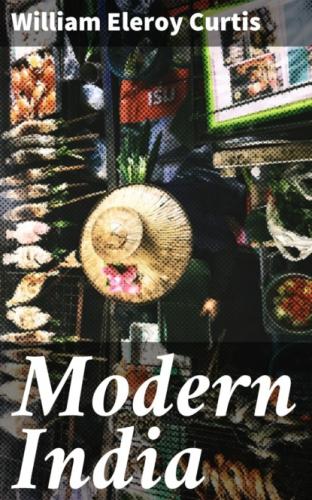| Language. | Spoken by | Language. | Spoken by | |
| Hindi | 85,675,373 | Malayalam | 5,428,250 | |
| Bengali | 41,343,762 | Masalmani | 3,669,390 | |
| Telugu | 19,885,137 | Sindhi | 2,592,341 | |
| Marathi | 18,892,875 | Santhal | 1,709,680 | |
| Punjabi | 17,724,610 | Western Pahari | 1,523,098 | |
| Tamil | 15,229,759 | Assamese | 1,435,820 | |
| Gujarathi | 10,619,789 | Gond | 1,379,580 | |
| Kanarese | 9,751,885 | Central Pahari | 1,153,384 | |
| Uriya | 9,010,957 | Marwadi | 1,147,480 | |
| Burmese | 5,926,864 | Pashtu | 1,080,931 |
The Province of Bengal, for example, is nearly as large as all our North Atlantic states combined, and contains an area of 122,548 square miles. The Province of Rajputana is even larger, and has a population of 74,744,886, almost as great as that of the entire United States. Madras has a population of 38,000,000, and the central provinces 47,000,000, while several of the 160 different states into which India is divided have more than 10,000,000 each.
The population is divided according to religions as follows:
| Hindus | 207,146,422 | Sikhs | 2,195,268 | |
| Mohammedans | 62,458,061 | Jains | 1,334,148 | |
| Buddhists | 9,476,750 | Parsees | 94,190 | |
| Animistic | 8,711,300 | Jews | 18,228 | |
| Christians | 2,923,241 | |||
It will be interesting to know that of the Christians enumerated at the last census 1,202,039 were Roman Catholics, 453,612 belonged to the established Church of England, 322,586 were orthodox Greeks, 220,863 were Baptists, 155,455 Lutherans, 53,829 Presbyterians and 157,847 put themselves down as Protestants without giving the sect to which they adhere.
The foreign population of India is very small. The British-born number only 96,653; 104,583 were born on the continent of Europe, and only 641,854 out of nearly 300,000,000 were born outside the boundaries of India.
India consists of four separate and well-defined regions: the jungles of the coast and the vast tract of country known as the Deccan, which make up the southern half of the Empire; the great plain which stretches southward from the Himalayas and constitutes what was formerly known as Hindustan; and a three-sided tableland which lies between, in the center of the empire, and is drained by a thousand rivers, which carry the water off as fast as it falls and leave but little to refresh the earth. This is the scene of periodical famine, but the government is pushing the irrigation system so rapidly that before many years the danger from that source will be much diminished.
The whole of southern India, according to the geologists, was once covered by a great forest, and indeed there are still 66,305,506 acres in trees which are carefully protected. The black soil of that region is proverbial for its fertility and produces cotton, sugar cane, rice and other tropical and semi-tropical plants with an abundance surpassed by no other region. The fruit-bearing palms require a chapter to themselves in the botanies, and are a source of surprising wealth. According to the latest census the enormous area of 546,224,964 acres is under cultivation, which is an average of nearly two acres per capita of population, and probably two-thirds of it is actually cropped. About one-fourth of this area is under irrigation and more than 22,000,000 acres produce two crops a year.
Most of the population is scattered in villages, and the number of people who are not supported by farms is much smaller than would be supposed from the figures of the census. A large proportion of the inhabitants returned as engaged in trade and other employments really belong to the agricultural community, because they are the agents of middlemen through whose hands the produce of the farms passes. These people live in villages among the farming community. In all the Empire there are only eight towns with more than 200,000 inhabitants; only three with more than 500,000, and only one with a million, which is Calcutta. The other seven in order of size are Bombay, Madras, Hyderabad, Lucknow, Rangoon, Benares and Delhi. There are only twenty-nine towns with more than 100,000 inhabitants; forty-nine with more than 50,000; 471 with more than 10,000; 877 with more than 5,000, and 2,134 organized municipalities with a population of 1,000 or more. These municipalities represent an aggregate population of 29,244,221 out of a total of 294,361,056, leaving 265,134,722 inhabitants scattered upon farms and in 729,752 villages. The city population, however, is growing more rapidly than that of the country, because of the efforts of the government to divert labor from the farms to the factories. In Germany, France, England and other countries of Europe and in the United States the reverse policy is pursued.
